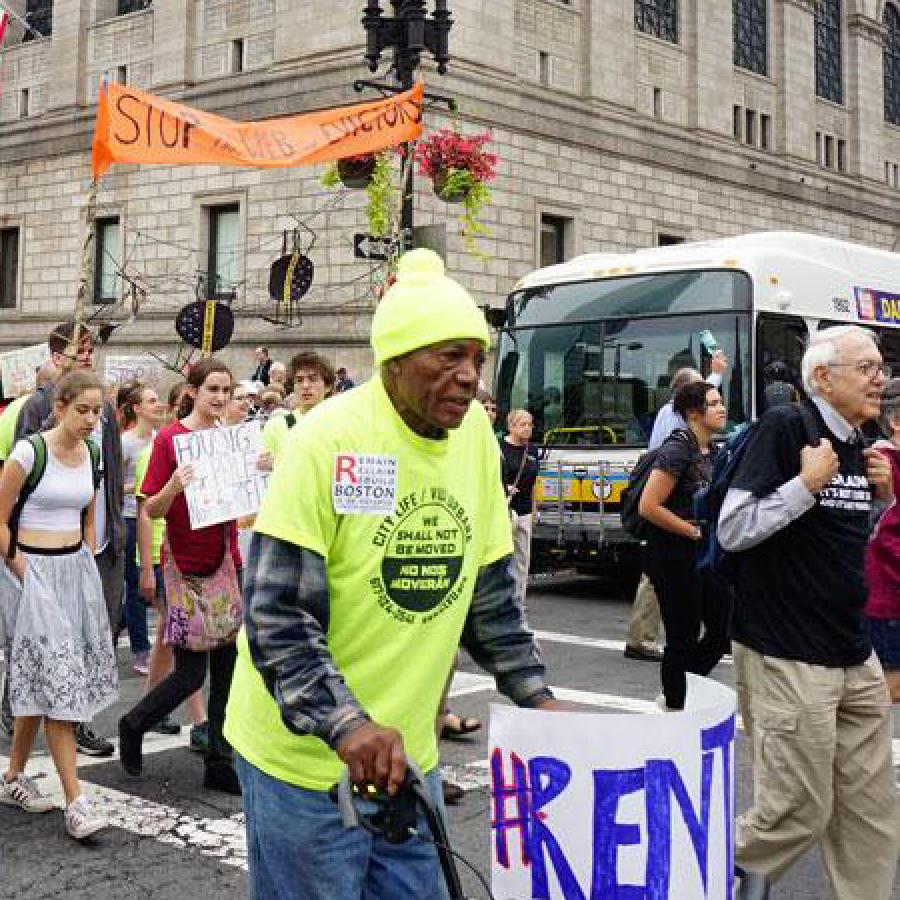Secure Retirement for All Californians: An Interview with State Senator Kevin de León on the Nation’s Largest Retirement Savings Program Since the New Deal
Thanks to nearly a decade of advocacy and research, and to the inspiring leadership of California Senate President Pro Tem Kevin de León — the kind of leader the nation needs — California has taken another step forward by making portable, auto-enrolled, individual retirement accounts available to millions of Californians who lack such benefits. Workers participating in the newly passed Secure Choice Retirement Savings Program will have at least 3 percent of their earnings deducted from their paycheck and deposited in an individual retirement account, managed by the Secure Choice Retirement Savings Investment Board. They will be able to opt out at any time.
Given that many participants will have no experience with saving for retirement and many may currently rely on public benefits programs, PolicyLink worked with partners and De León's office to advocate for equity measures within the bill to ensure that the program best serves the needs of low-income workers. Thanks to this advocacy, the Board is required to establish a comprehensive outreach and education program to inform eligible workers of the risks and benefits of the program, and there is now increased attention on ensuring that retirement savings do not count toward assets, which could potentially disqualify low-income workers from receiving vital public benefits.
Touted as the broadest enhancement of retirement benefits since Social Security, Secure Choice provides a crucial opportunity to prove the merits of state-backed retirement pans.
Senator de León spoke with Christopher Brown, director for financial security at PolicyLink, to share his insight into this innovative new policy and discuss how other states might follow in California's footsteps.
Why is it so important that the state step in to provide opportunities for workers to save for retirement?
We have close to seven million workers in California in the private sector with no access to any retirement security plan — neither a defined benefit nor a defined contribution plan. This means that 50 percent of middle-income workers are at risk of retiring into poverty. The numbers are worse for women retirees, who make up two-thirds of retirees today who live in poverty. When I think of women like my mother or my aunt, women who raised us, clothed us, fed us — it's immoral that these women should retire into poverty. After a lifetime career of hard work, helping to make California the sixth largest economy in the world, they deserve to live with a modicum of dignity and respect. This is a not a partisan issue. Retirement insecurity impacts all Americans, regardless of the hue of your skin or your geographic location. Secure Choice is a complete game changer. It gives millions of workers the option to save automatically, through their employer's payroll. No matter what job you hold in California, you can plan for your future.
What were some of the challenges you faced in creating this legislation, and how were they overcome?
It's been a long, arduous journey to get this approved. The first iteration of this measure failed in 2008, and again in 2009. But in 2012 Governor Jerry Brown signed a measure that allowed us to appoint a Secure Choice Board and raise money to conduct the necessary feasibility studies and market analysis to show that this would be financially viable and self-sustaining. It took years of going back and forth to Washington, DC to meet with the Department of Labor, the Treasury Department, and other key players on Capitol Hill. We rolled up our sleeves and went to work, going over the arcane technical aspects and trying to find a solution to this vexing problem of retirement insecurity.
All along the way we had very strong opposition on Wall Street and in Washington, DC, because our program was seen as competing with financial markets for retirement. However, we were able to make the case that this wasn't about competition or cannibalizing an existing financial market sector, because we are trying to reach a highly fragmented, diverse community made up largely of lower-income workers who need retirement security the most and aren't being reached by private financial providers. We also stressed that this is a policy issue, not a commercial one — that too many people are hurting because they don't have access to retirement savings as part of their employment, and too many people would be forced to rely on government assistance in retirement because they had not had the opportunity to save throughout their careers.
What will be the next steps in implementing Secure Choice?
The law will go into effect on January 1, 2017, and will authorize the Secure Choice Board, chaired by Treasurer John Chiang, to begin the development of the program. Over the course of three years we will phase in employers by company size; ultimately, all employers with five or more employees will be required to participate. We still have a lot of work to do to educate consumers about what's going to happen and why it's important. We have seven million people in California who will be eligible for this, so we need to take them all on a journey to educate them about the importance of retirement savings, and the power of saving early so that you compound your principal investment.
We've scaled the mountain and withstood the powerful, well-moneyed opposition, but now we need to roll up our sleeves and take this to the people to make sure the outcomes are positive.
The Department of Labor recently issued a proposed rule that would pave the way for local governments to follow California's lead in providing retirement plans. What advice would you give to other states wishing to provide their own retirement savings plans?
I'd say the critical thing that is going to help expand these policies is leadership — both nationally and within states. This leadership needs to be bipartisan, as it was in California, and they need to step up and make their fellow politicians understand that their citizens are hurting in retirement. They have a choice: they can represent the people and try to increase access to retirement benefits, or they can represent the interests of Wall Street and do nothing. The good news is that the concept of state-backed retirement savings has caught on like wildfire. We know of at least 15 other states that are following our lead with plans to adopt similar programs in the future, and we couldn't be more excited.


